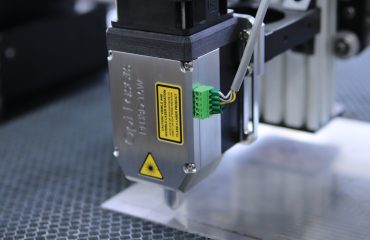body { font-family: sans-serif; line-height: 1.6; }
h1, h2, h3 { color: #333; }
h1 { font-size: 2.5em; }
h2 { font-size: 2em; }
h3 { font-size: 1.5em; }
p { margin-bottom: 1em; }
ul { list-style-type: disc; margin-left: 20px; }
Navigating the complex world of European manufacturing standards can be daunting. This comprehensive guide will demystify the process of meeting EN standards, helping your manufacturing business achieve compliance and unlock significant advantages in the marketplace.
Understanding EN Standards: A Foundation for Quality
EN standards, developed by the European Committee for Standardization (CEN), represent a crucial set of technical specifications for products, processes, and services across Europe. Compliance with these standards signifies a commitment to quality, safety, and interoperability. These standards cover a vast range of industries, from construction and machinery to electronics and healthcare. Understanding the specific EN standards relevant to your manufacturing processes is the first crucial step towards compliance. This often involves identifying the applicable directives and harmonized standards based on your product’s intended use and functionality. Failure to comply can lead to significant penalties, including product recalls, legal action, and reputational damage.
Implementing an Effective Compliance Program
Achieving and maintaining compliance with EN standards requires a well-structured and comprehensive program. This should include several key elements:
- Identification of Applicable Standards: Thoroughly research and identify all relevant EN standards applicable to your products and processes. This may involve consulting industry experts or engaging a third-party certification body.
- Documentation and Record Keeping: Maintain meticulous records of all processes, tests, and inspections. This documentation is crucial for demonstrating compliance during audits.
- Regular Audits and Inspections: Schedule regular internal audits to identify any areas of non-compliance and implement corrective actions. External audits by certified bodies are often required for certification.
- Employee Training: Ensure that all relevant employees are adequately trained on EN standards and their implications for their work.
- Continuous Improvement: Establish a system for continuous improvement to enhance your compliance program and address emerging challenges.
The Benefits of Meeting EN Standards
The benefits of adhering to EN standards extend far beyond simply avoiding penalties. Compliance offers a range of competitive advantages:
- Enhanced Product Quality and Safety: Meeting EN standards ensures that your products meet high quality and safety requirements, protecting your customers and building trust.
- Improved Market Access: Compliance with EN standards is often a prerequisite for selling products in the European market. It opens doors to new markets and expands your customer base.
- Increased Competitiveness: Demonstrating compliance with EN standards provides a significant competitive edge, showcasing your commitment to quality and professionalism.
- Reduced Risks: Proactive compliance reduces the risk of product recalls, legal disputes, and reputational damage.
- Improved Efficiency: A well-structured compliance program can streamline manufacturing processes and improve overall efficiency.
Challenges in Meeting EN Standards
While the benefits of EN compliance are substantial, businesses often face challenges in achieving and maintaining compliance:
- Cost of Compliance: Implementing a robust compliance program can involve significant upfront costs, including training, testing, and certification.
- Complexity of Standards: The sheer volume and complexity of EN standards can make it challenging to navigate and understand the requirements.
- Keeping Up with Changes: EN standards are regularly updated, requiring businesses to stay informed about changes and adapt their processes accordingly.
- Lack of Expertise: Many businesses lack the internal expertise to manage compliance effectively, requiring external support.
- Time Constraints: Implementing and maintaining a compliance program requires significant time and resources.
The Future of EN Standards in Manufacturing
The future of EN standards in manufacturing is likely to involve increased emphasis on sustainability, digitalization, and traceability. We can expect to see more standards addressing environmental impact, data security, and supply chain transparency. Businesses will need to adapt to these evolving requirements to remain competitive. Investing in advanced technologies and adopting sustainable practices will become increasingly important for maintaining compliance and achieving a competitive advantage. Furthermore, collaboration and knowledge sharing within the industry will play a crucial role in navigating the complexities of EN standards and ensuring consistent high quality across the European manufacturing landscape.
By understanding and proactively addressing the challenges and opportunities associated with EN standards, manufacturers can establish a robust foundation for success in the European market and beyond.
Tags: EN Standards, Manufacturing Compliance, European Standards, Quality Management, ISO Certification




